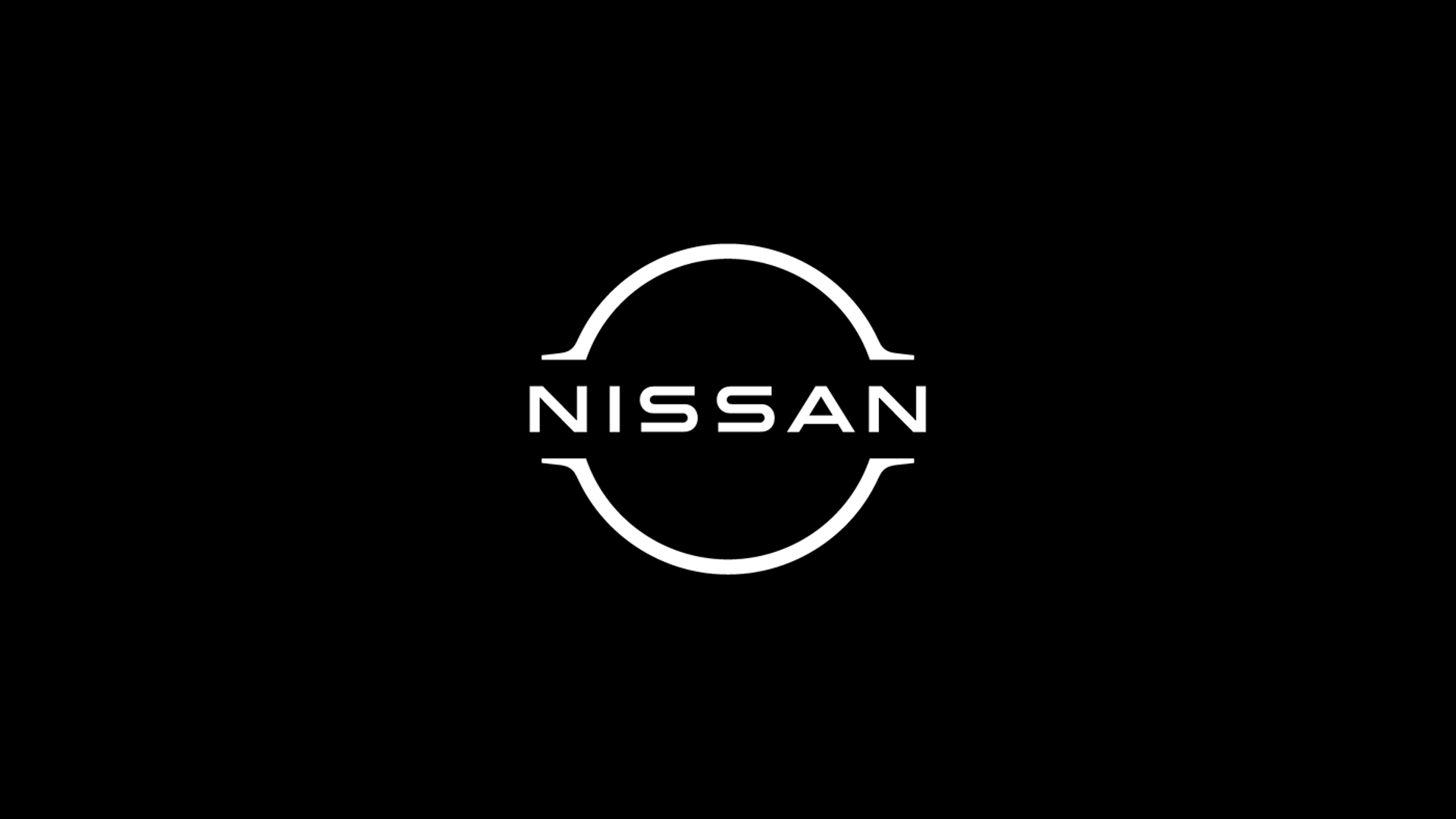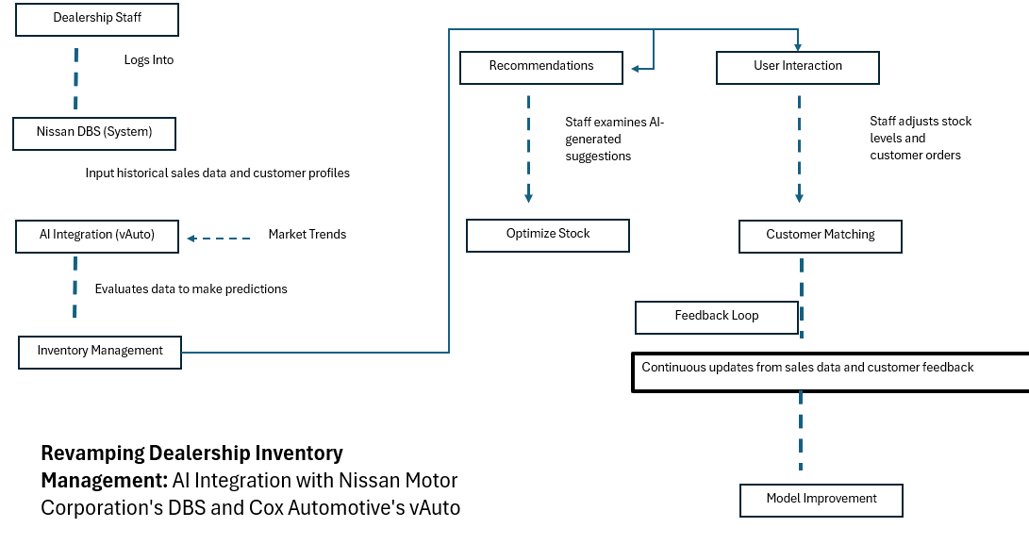


Case Study: Nissan Motor Corporation Implemented AI Integration to Improve Dealership Inventory Management Systems.
Problem Definition:
Nissan Motor Corporation's Dealer Business System (DBS) and Cox Automotive's vAuto encounter difficulties when managing vehicle inventories:
• Manual Data Entry: Manual entry of vehicle data at dealerships produces errors and reduces efficiency.
• Lack of Real-Time Insights: Dealerships lack access to real-time data about their stock levels and pricing trends.
• Inefficient Stock Turnover: Suboptimal pricing strategies and inventory choices create slow stock turnover rates.
Background:
Through various discovery sessions with internal stakeholders and dealership directors, it became clear that the recurring problems of being overstocked and understocked were significant business burdens. I then compiled my Product Requirement Documents and met with my engineering and development teams, as well as UX/UI designers. We concluded that integrating our DBS with Cox Automotive's vAuto would be cost-effective.
Hypothesis:
I hypothesized that an AI integration into DBS and vAuto would enable us to:
• Automate data entry operations to minimize mistakes and save time on administrative responsibilities.
• Gain real-time insights for improved inventory management and better pricing decisions.
• Optimize stock turnover, increasing sales and profitability.
Assumptions:
• AI delivers precise predictions of pricing and market trends.
• Dealerships will adopt AI-driven insights for decision-making.
• Integration with existing systems will be seamless.
• Implementation of AI systems will enhance inventory turnover rates and boost sales performance.
Current State:
DBS and vAuto: Current systems depend on manual data entry, lack real-time insights, and suffer from poor inventory management techniques.
Minimum Viable Product (MVP):
We tested our hypothesis and assumptions and received feedback with an MVP for the AI integration: Develop AI algorithms for:
• Automated Data Entry: Streamline data entry processes.
• Real-Time Insights: The system will offer actionable insights related to inventory levels, pricing structures, and market trend analysis.
• Inventory Optimization: Recommend optimal stock levels and pricing strategies.
With sufficient feedback and by facilitating meetings with the engineering, development, and design teams, I created a roadmap:
• Week 1: Define AI integration requirements and data sources.
• Weeks 1-2: Create AI systems that automate data entry tasks and deliver real-time analysis.
• Weeks 3-4: Merge AI technology into DBS and vAuto systems to ensure smooth data movement between platforms.
• Weeks 5-6: Conduct user testing and gather feedback.
• Weeks 7-8: Begin AI integration, deliver training programs to users, and track performance metrics.
Business Outcomes:
• Reduce Manual Data Entry: Reduce manual data entry time by 90%.
• Improve Inventory Turnover: Achieve a 20% higher stock rotation rate in six months.
• Enhance Pricing Accuracy: Reduce pricing errors by 30%.
• Increase Sales: Enhance sales performance by 15% through inventory optimization strategies.
Conclusion:
Nissan Motor Corporation's AI integration in DBS and vAuto systems enhanced our inventory management operations while minimizing mistakes and boosting stock turnover rates. This initiative supported Nissan Motor Corporation's objectives to improve efficiency while enhancing sales performance and providing value to both dealerships and customers.
Reflection:
This experience revealed how the synergy between product management, engineering, development, and UX/UI designers can be optimized when I, as the product manager, approach collaboration with curiosity and humility in exploring the best feasible solutions.